#structural Steelwork
Explore tagged Tumblr posts
Text
The Benefits of Structural Steelwork for Sustainable Building
Structural steelwork is a vital component of sustainable building practises, offering unparallelled benefits that address environmental, economic, and social challenges. Its recyclability, energy efficiency, durability, and adaptability make it a material of choice for eco-conscious architects and builders. As the world moves toward a more sustainable future, the role of structural steel in green construction will only continue to grow, setting new standards for innovation and responsibility in the industry.
https://jamesengineeringuk.blogspot.com/the-benefits-of-structural-steelwork
0 notes
Text
5 Shocking Property Maintenance Mistakes That Could Cost You Thousands

Just bought a stunning new build? Freshened things up with a dazzling refurbishment? Or maybe you've even added a sleek extension to your abode? Congratulations! But before you settle into complete bliss, let's talk about those pesky property maintenance tasks. While the excitement of renovations (kitchens & bathrooms, anyone?) and stunning finishes might consume you, neglecting property maintenance can turn your dream home into a wallet-draining nightmare.
Fear not, fellow homeowners .Here are 5 shocking mistakes to avoid, whether you're basking in a Royston house extension, rely on reliable builders in Stevenage, or live in the beautiful Pembrokeshire countryside:
1. Ignoring Leaky Faucets and Dripping Pipes:
That tiny drip-drip-drip might seem harmless, but it can morph into a major plumbing disaster (and a hefty bill) down the line. Fix leaky faucets promptly and have your pipes inspected regularly for hidden threats.
2. Skipping Gutter Cleaning:
Clogged gutters are a recipe for roof and foundation woes. Rainwater overflowing can lead to leaks, dampness, and even structural damage. Schedule regular gutter cleaning (especially after autumn leaf fall) to avoid costly repairs.
3. Neglecting Roof Maintenance:
Your roof is your home's guardian against the elements. Don't wait for a storm to expose loose shingles or damaged flashing. Get your roof inspected periodically and address any issues immediately.
4. Putting Off Window and Door Maintenance:
Worn-out weather stripping and loose caulking around windows and doors can lead to drafts, increased energy bills, and even water infiltration. Invest in regular maintenance (resealing, replacing weather stripping) to keep your home energy-efficient and weatherproof.
5. Forgetting Preventative Maintenance:
Think of property maintenance as preventative healthcare for your home. Schedule regular inspections for electrical wiring, heating & cooling systems, and plumbing. Early detection of potential problems can save you thousands in repairs later.
Remember:
Consistent property maintenance isn't just about keeping your home looking sharp; it's about safeguarding your investment and avoiding costly surprises. By addressing minor issues promptly, you can ensure your dream home stays that way – a beautiful, comfortable, and financially secure haven for years to come.
0 notes
Text

Bailey Fabrications Ltd
Precision Metal Fabrication for Various Industries. At Bailey Fabrications, we specialize in precision metal fabrication for various industries, including construction, engineering, and manufacturing. Our team works closely with clients to understand their specific requirements and deliver custom-made metal products that meet their needs.
#architectural metal fabrication hampshire#structural metal fabrication hampshire#steel fabricator hampshire#data centre steelwork hampshire.
0 notes
Text

#structural engineering company#architectural design solutions#residential structural engineer near me#structural engineering for architects#structural engineer london#structural steelwork fabricators#structural steel detailing services#top structural engineering firms uk
0 notes
Text
Structural Steel Work Services for Superior Construction in India
Braithwaite & Co. Ltd. is a PSU under the Ministry of Railways. The company has played a pivotal role in constructing diverse engineering marvels in the country. For instance, it has provided structural steelwork for Vidyasagar Setu, Brahmaputra Bridge, Ganga Bridge, Mahanadi Bridge, etc. Headquartered in Kolkata, West Bengal, the company got conferred with Miniratna status in 2022.
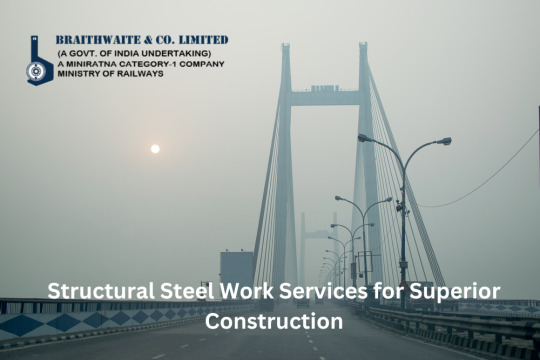
0 notes
Text
May 4, 2024 Update from the Battleship Texas Foundation
"BATTLESHIP TEXAS UPDATE

A new plank made from the deck of #battleshiptexas will be apart of the ship's store in the near future. You can find all of the items made from the ship's deck here: https://store.battleshiptexas.org/collections/deck-wood
The ship is currently moored at Pier D in Gulf Copper Shipyard where it will continue to undergo repairs and preparations to become a museum ship once again!


The water sheds, designed to help keep the weather out, have been removed for repair. They will be placed back once those repairs are complete.

Fasteners used to hold the water sheds in place are being removed. These will be made into keepsakes in the future. The water sheds, designed to help keep the weather out, have been removed for repair. They will be placed back once those repairs are complete.
AFT FIRE CONTROL RESTORATION: The ship's aft fire control tower is looking great! The mullions for the windows are fitted, floater net baskets added, and more. These repairs and additions will help return the ship to its 1945 appearance.
DECK REPAIRS: The decking on the ship's bow is being removed moving aft. Steelworkers will soon follow them to blast the steel and make repairs where needed. A pressure treated pine will be put back on the deck. Yes, some of this wood is being saved to produce items to raise funds.
For more information on the deck visit: link

A resin used to level the deck in 1990 is being removed. The new planks will be cut to fit the deck instead.

1990 pine decking removed from the O1 level. These boards will be cut down and shipped off to become Battleship Texas keepsakes.

Margin pieces from the ship's O1 level have been saved to be used as a pattern.


The removal of the pine decking on the ship's O1 level is nearing completion. We are now able to see remnants of gun mounts, deck lights, and more!

This is where a 5".51 cal. Gun was before being removed throughout the ship's service career.

If you have taken a picture on the ship's bow before, you may recognize that the fans that were placed over this hatch area are now gone! This is more step forward to improving the ship's appearance.

With the removal of the ship's decking on the bow, the ward room temperature has increased considerably! It was 85 degrees Fahrenheit today.
RADAR TOP MAST: The radar top mast has been removed from the ship's main mast and will receive structural repairs before being placed back on the ship.
MAIN MAST: The deck on the ship's main mast is being repaired and replaced in certain areas. Gun mounts are also being added back.

Repairs made to the ship's main mast are nearing completion. The radar mast is still being worked on, but once complete, it will be placed back. The foundations for the 20mm Oerlikons will also be put back!
FREQUENTLY ASKED QUESTIONS:
WHAT’S NEXT? - Battleship Texas will remain at Gulf Copper Shipyard for until her new home is ready for her. Additional steel work, removal and replacement of the ship’s deck, and superstructure/aft fire control restoration will continue. And painting the topsides!

The ship's smoke stack is being repaired to help keep it watertight. They will also use the scaffolding to run pipe to the whistle, as well as installing the ship's siren.

Workers are continuing to repair the ship's drainage system. This will help reduce standing water on the lower decks.

Drain system repairs being made in the ship's galley, and the condenser room just below it. These were previously blanked off.
TOURING? - The Battleship Texas Foundation is working on new touring opportunities before the ship reopens.
REOPENING? - There is a lot to be done before the ship is ready for touring at its new home in Galveston, Texas. Reopening is projected to happen sometime in the later half of 2025.
MISSING GUNS? - The ship's anti-aircraft guns are currently undergoing restoration. The guns and gun directors will be replaced once their restoration is complete.

The new oak foundation for one of the ship's 5"/51 cal. Guns in the aircastle awaits its stand and carriage.
Come on Texas!
To donate to the preservation and operation of Battleship Texas, please visit: https://battleshiptexas.org/
Support Battleship Texas by making a purchase through the ship's store: https://store.battleshiptexas.org"
Posted on the Battleship Texas Foundation Facebook page: link
#Battleship TEXAS#Battleship Texas Foundation#Update#USS TEXAS (BB-35)#USS TEXAS#New York Class#Dreadnought#Battleship#Warship#Ship#Museum Ship#Galveston#Texas#repairs#Gulf Copper#Restoration#May#2024#my post
31 notes
·
View notes
Text

Joseph Wambaugh
Bestselling crime writer whose work drew on his own experience as an LAPD detective
Joseph Wambaugh, who has died of cancer aged 88, was one of the most important US crime writers of his generation. Beginning with his novels The New Centurions (1971) and The Blue Knight (1972), and the nonfiction The Onion Field (1973), Wambaugh’s books and their screen adaptations were built around the inner tensions of police work.
Wambaugh, himself a Los Angeles cop for 14 years, knew well the challenges officers faced in maintaining some sort of normality while trapped in the messy realities of their brutal and often irrational jobs. He revealed the strains this put on their lives, and the sometimes extreme means they took to relieve that pressure. He also dealt unflinchingly with corruption, both personal, among cops, and structurally, within the politics of the police department and the city the officers were sworn to protect and serve.
“If he didn’t invent the police novel, he certainly reinvented it,” said the writer Michael Connelly, whose cop Harry Bosch confronted many of the same issues. Certainly, Wambaugh’s world was a far cry from the squeaky-clean image of the LAPD detective Joe Friday in the TV show Dragnet.
Wambaugh was born in East Pittsburgh, Pennsylvania, where his father, Joseph, a steelworker and cop, was a small-town police chief and his mother, Anne (nee Malloy), was a housewife. They joined the postwar exodus to California when Joe was 14; he graduated from high school in Ontario, California at 17, in 1954, and joined the Marines. The following year, he married his high-school sweetheart, Dee Allsop.
Discharged in 1957, he worked in a steel mill while taking night classes in English at Los Angeles State College (now California State University Los Angeles). He received his BA in 1960 and joined the LAPD. He continued studying at night while walking a beat, and in 1968 received his master’s degree and was promoted to detective.
His early short stories were all rejected, but one editor advised he try longer form. His first novel, The New Centurions, spent 32 weeks on the New York Times bestseller list. It tracks three 1960 graduates of the police academy as they learn their jobs, culminating in the Watts riots of 1965. The 1972 film of the novel gave George C Scott one of his best roles. By then Wambaugh had retired from the LAPD; he was arresting criminals who asked for his autograph, or for referrals to publishers or movie producers.

The Blue Knight told of a career beat cop, Bumper Morgan, in his last days before retirement. The 1973 TV miniseries based on the book produced an Emmy award for William Holden as Bumper, and a Golden Globe for Lee Remick as his wife, and spun off a TV series starring George Kennedy.
Wambaugh followed with The Onion Field, an account of the kidnapping by petty criminals of two LA cops, one of whom was killed while the other was able to escape. In a work often compared to Truman Capote’s In Cold Blood, Wambaugh contrasted the way one of the two killers learns the veneer of respectability during the course of the trial, while the surviving cop struggles with the trauma of his experience. “I’m most interested in characters who have no conscience,” he explained, referencing his own Catholic upbringing. The book won a special Edgar Allan Poe award from the Mystery Writers of America; Wambaugh wrote the screenplay for Harold Becker’s excellent 1979 film, which starred James Woods and John Savage.
In 1973 he co-created the TV anthology series Police Story, episodes of which won Edgars in 1974 and 1975, and spun off another hit series, Police Woman, starring Angie Dickinson.
Each of Wambaugh’s next three novels quickly transitioned to film. The Choirboys (1975) became a vehicle for one of the director Robert Aldrich’s most anarchic efforts, in 1977, for which Wambaugh wrote the screenplay; he won another Edgar for the script for Becker’s adaptation of The Black Marble (1978).
The Glitter Dome (1980) was set in a Chinatown bar by that name where police officers romanced “chickens and vultures”, drawing a moral parallel with the police investigation into pornography. The 1984 HBO production starred James Garner and Margot Kidder.
After ranging into politics and Nobel prizes in Delta Star (1983), Wambaugh returned to true crime in 1984 with two books, Lines and Shadows, and Echoes in the Darkness. The latter became a TV miniseries with Stockard Channing, Peter Coyote and Treat Williams. It dealt with the murder in suburban Philadelphia of a schoolteacher and her two children, for which the school principal was one of two men convicted. When his conviction was later overturned, it emerged Wambaugh had paid the lead investigator $50,000, contingent on the principal’s arrest. Though the payment was not part of the overturning of the verdict, Wambaugh was sued by the principal, but won the case.
By now, his influence on police dramas had been widely absorbed, in everything from Hill Street Blues and NYPD Blue to The Shield. But Wambaugh’s own writing switched focus as he moved out of LA to Orange County and to San Diego: five novels between 1985 and 1996 dealt more with the shadow-lives of the rich elites in exclusive communities.
The Blooding (1989) was the true crime story of the Leicester murderer Colin Pitchfork, who was one of the first people convicted via DNA evidence. Wambaugh won his third Edgar for his next true crime story, Fire Lover (2002), about Frank Orr, America’s most prolific serial arsonist, who worked as a fire investigator.
Two years after his fourth Edgar, a lifetime achievement award in 2004, he returned to fiction, prompted by the federal government’s oversight of the LAPD following the Rampart corruption scandal. Hollywood Station (2006) was the first of five novels in six years, all with Hollywood in the title, starring the detective “Hollywood Nate” West and featuring a pair of detectives called Flotsam and Jetsam, shades of Connelly’s Crate and Barrel. They recalled the stories of his own early days on the force. “Once I create the characters,” he said, “I let [them] take me [where they are going]”.
Wambaugh is survived by his wife, son, David, and daughter, Jeanette. Another son, Mark, died in 1984.
🔔 Joseph Aloysius Wambaugh, writer, born 22 January 1937; died 28 February 2025
Daily inspiration. Discover more photos at Just for Books…?
7 notes
·
View notes
Note
Have you read either of Matthew Desmond's books on poverty or eviction? I'm reading them and Desmond mentions how poverty ties in with political disillusionment and fuck man Democrats need to be reaching out to these people, I mean it's dire out there
i have read Evicted and i did not care for it.
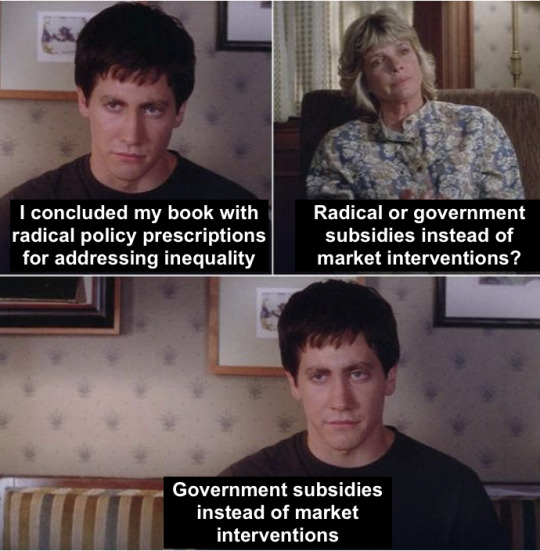
as to your other point, i don't think a lack of outreach is the problem
i find that desmond's approach substitutes moralism for structural analysis. it's the sort of thing that sells books but is not particularly useful for political strategy. i'm old-fashioned in that i don't really think of poverty as being the problem--i think that formulation has always been inadequate. here's a bit from Judith Stein's Running Steel, Running America to that effect:


poverty is a new name for unemployment, underemployment, and poorly paid employment. i prefer not to use the term if i can help it, because it obfuscates the problems and their solutions.
why are people poor? because they cannot find jobs that pay enough.
you address unemployment with employment, underemployment with targeted jobs programs and/or retraining, and--this is the big one for political purposes--poorly paid employment with unionization.
collective bargaining is the primary, if not exclusive means by which we've improved the quality and character of employment being generated by the economy in the US. steel and auto were bad industries to work in... until they weren't. what changed was the CIO--the United Autoworkers, the Steelworkers' Organizing Committee that became United Steelworkers.
you wanna talk about dire? nationally we're rocking 6% private sector union density. that's dire. we're generating lots of growth in, for example, the home health care industry. those are bad jobs! the only way you make them better, though, is by organizing them.
the thing with unions politically is that they are capable of representing workers' interests politically far more effectively than any nonprofit. unlike The Groups (to borrow a term for the dem's nonprofit universe from the discourse runoff from Adam Jentleson's NYT piece) unions represent their dues-paying members. they exist to represent their members' interests, and they have to do so every day, regardless of whether or not it's an election year. this makes them effective political vehicles for their members' interests as well, but to affect national politics you really need the numbers.
i don't think the party itself is the right vehicle for organizing. but organized labor has been a part of the coalition before, and still is. it's just that to drive the party, you need majorities that can win elections.
jane mcalevey's formulation of organizing vs. mobilizing explains this more succinctly and provides a good example of how this stuff is transferable:



^this is from 2019, mind you
12 notes
·
View notes
Text
big ATNT communications tower right in the center of Pontiac

















" The building was constructed in 1928, as indicated by the date carved into its granite wall. Pontiac had both Michigan Bell Telephone (MBT) and AT&T microwave radio equipment, with antennas on a partially-enclosed rooftop tower. The box-like tower atop the building is in fact a steel tower covered to match the building's exterior. The covering is solid about halfway up the structure, while the upper half is provided with rectangular window-like openings at various levels for the microwave antennas. To ascend the tower, one would climb up a ladder in the warm interior of the 'box', and stop at a Barco door-type hatch. Then the climber would open the hatch, and crawl out on the 'roof'.
Unfortunately, the tower's 'windows' and its interior steelwork made the structure a perfect home for the many pigeons which infest downtown Pontiac. A radio engineer who worked on the antennas describes almost losing a shoe as his foot sank into the 12-18 inch thick layer of pigeon droppings, weighing literally tons, which covered the roof.
Pontiac, like most MBT radio towers, ran the light 24 hours. When it flashed, it did not go off; that would stress the lamp filaments too much. The flasher switched in and switched out a high-current resistor in series with the lamp that kept the lamp 'warm' during the off cycles. The actual sequence was not ON-off..., but rather BRIGHT, very dim, BRIGHT, very dim... " https://long-lines.net/places-routes/Pontiac_MI/index.html
#and he has a big flashing red light on him I can see at night#mngh.... so tall. and big. and worn out. uughghghgkhk.. OUUGHH..#objectum community#objectum#objectophilia#wiresandwires
5 notes
·
View notes
Text
Introduction to Structural Steelwork: Key Concepts and Applications
Structural steelwork refers to the design, fabrication, and assembly of steel components to create a structural framework. These frameworks support loads, resist environmental stresses, and ensure the stability of a structure. The components, including beams, columns, and trusses, are meticulously engineered to meet specific project requirements. Structural steel is typically composed of iron, carbon, and other alloys, providing it with superior strength and durability.
0 notes
Text








stenciled grafitti on a boarded up and abandoned theater in Gary, Indiana, a major steelworking town in the early 20th century. Gary has over 13,000 abandoned structures.
#gary indiana#the rust belt#rust belt#abandoned#midwestern gothic#gothic americana#american gothic#midwest gothic#decay#urban decay#digital photography#mine#josiah's photos#graffiti#art
18 notes
·
View notes
Text
Find a Residential Structural Engineer near You
Seeking a residential structural engineer nearby? Our team offers expertise in ensuring the stability and safety of your home projects. From renovations to new constructions, we provide personalized solutions tailored to your location. Trust our experienced professionals for reliable structural assessments and recommendations. Reach out today to find a residential structural engineer near you.
Visit Here: https://www.cadengineeringsolutions.co.uk/for-structural-engineers.php
#architectural design solutions#residential structural engineer near me#structural engineering company#structural engineering for architects#structural engineer london#structural steelwork fabricators#structural steel detailing services#top structural engineering firms uk
0 notes
Text
Chapter 25- Part 13
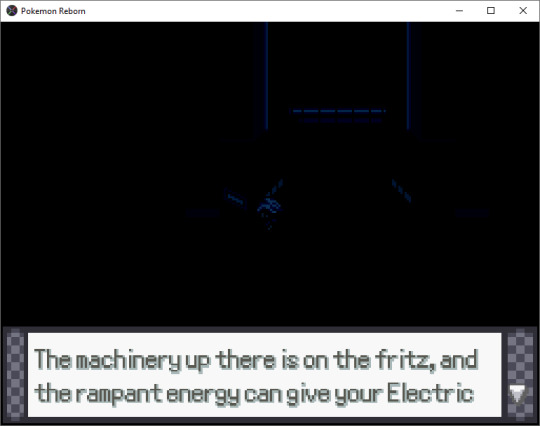


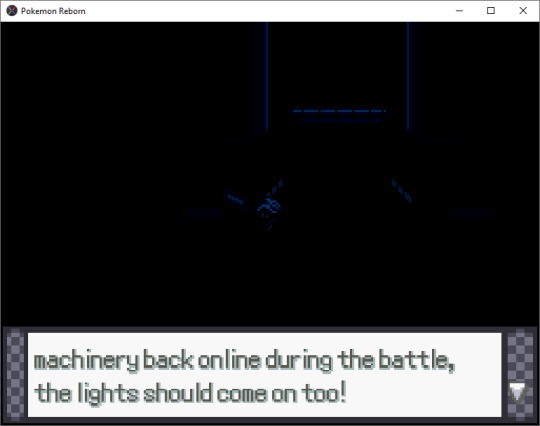

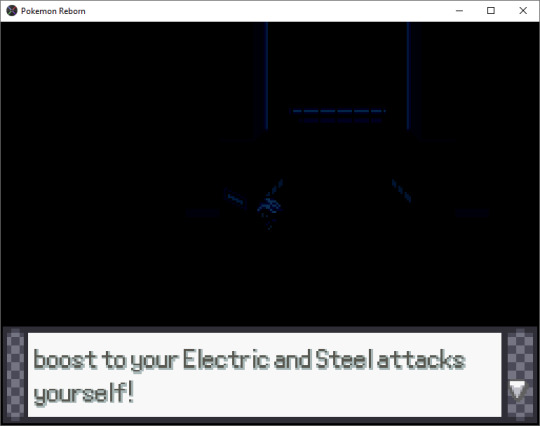
Okay, it's as I thought…turn it back to Factory Field, and that Ghost-type boost goes away. Interesting dynamic there…


Huh-? Wait, there's more? Shoot, I was pressing the down key for a solid couple seconds there because I thought she was done.

He can talk? Um- more importantly, I'm curious as to what this apology could be about…

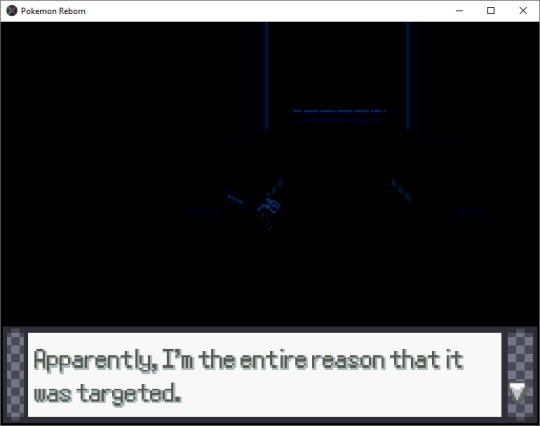
Huh?? Okay, hold up, I wasn't expecting this kinda intrigue all of a sudden! It wasn't because Team Meteor was trying to mess with the city's structure?
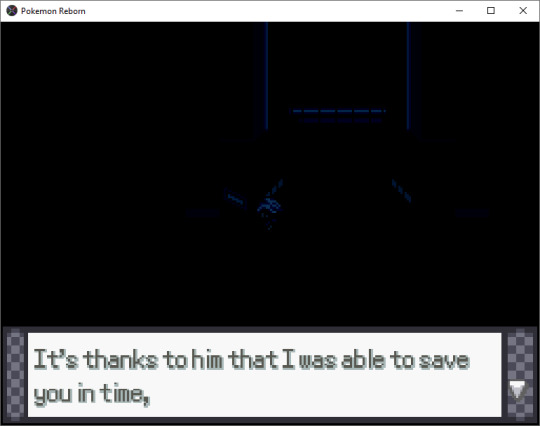
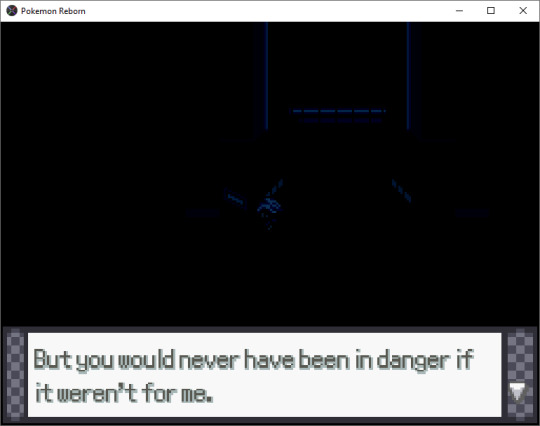

What do you mean Team Meteor tried to kill Ame specifically?? I've gathered that being the manager of the Reborn League gives one a high level of authority and influence, sure, but like…enough to warrant specific targeting for an assassination? It's not like she's the Champion, so like…I dunno.
But more importantly, if Ame's information here is accurate, then…Xera truly was a victim of circumstance. It really was just a matter of who Ame was sitting closest to at the time, and that person just happened to be Xera. I wasn't actually expecting to get answers to what I was proposing earlier, I was just explaining character motivations in the context of what's happened in the story thus far. Huh.
Well- that doesn't change much, I mean…Xera could still be in a bit of denial, she could still want to hear it from Shade himself, even if I'm beginning to doubt that'll actually work out.
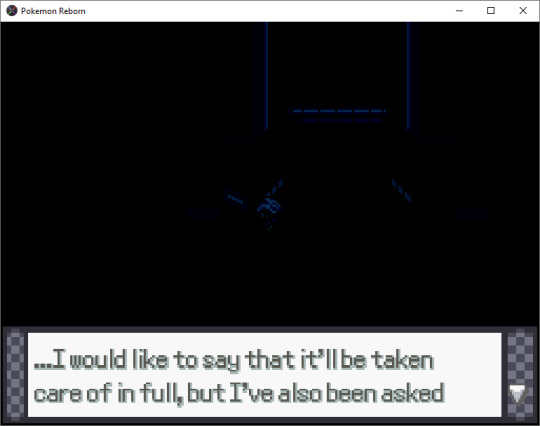

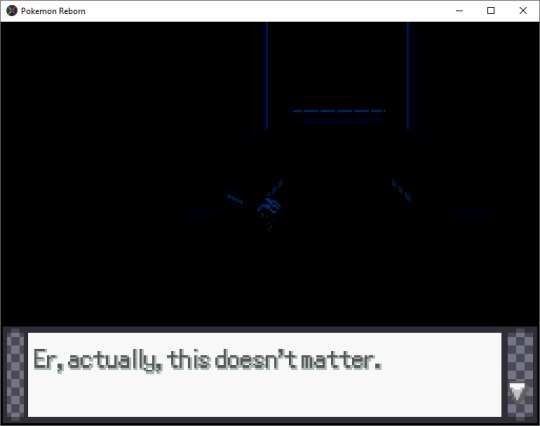

And Ame's not exactly helping, being all cryptic like that. But there's nothing more to be done about it right now- so, while my character has an existential crisis about the nature of her survival and continued existence, let's talk strategy.
Ghost-types are an interesting breed- after all, they only have two weaknesses: Dark-types and…themselves, Ghost-types. Given Short-Circuit Field boosts certain Ghost moves and any Ghost-types I bring will be just as weak to those attacks as Shade’s Pokémon, it's probably better if I just…don't bring any Ghost-types. So that leaves Dark as my main option, and luckily we have a few options for that. In addition, Normal-types are immune to those Ghost moves, and while Ghost-types are just as immune to Normal-types, those same Normal-types can learn Dark- or Ghost-type attacks to compensate.
There's also the matter of the Short-Circuit Field itself. It largely benefits Ghost-types, because in terms of Dark-type moves, only three get a boost: Dark Pulse, Night Daze, and Night Slash. For that reason, I think it would be better to turn Short-Circuit Field back to Factory Field as soon as possible, to take away that advantage on Shade's side. Granted, there are a few ways for Shade to turn it back to Short-Circuit Field…
The big one seems to be Discharge, but here's the thing about that: the only Ghost-type that can learn Discharge in any capacity is Rotom. And we already encountered Rotom- default Rotom, no less- when we fought Connal. So I don't think Shade's gonna have a Rotom of his own- after all, why use the exact same Pokémon in two boss fights in a row? Why wouldn't they have given Connal one of the other Rotom forms in that case?
However, there are other ways to convert Factory Field to Short-Circuit Field, such as through certain Ground-type moves. Bulldoze, Earthquake, Magnitude, even Fissure- Sandyghast, Palossand, Dusclops, Dusknoir, Golett, Golurk, Phantump, Trevenant, and Dhelmise are Ghost-types that can learn at least one of these moves (and that Shade would realistically have- I doubt he's gonna use his own Alolan Marowak or a Giratina), so he's got options.
I wouldn't be surprised to see Golett/Golurk or Sandyghast/Palossand, their Ground-typing makes them immune to opponents’ boosted Electric attacks and they provide another way to bring back Short-Circuit Field. Dhelmise is also an interesting one, because Short-Circuit Field has a special property that grants Steel-type moves used by Pokémon with Steelworker a secondary Electric type- and Dhelmise happens to be the only Pokémon with this Ability. Just seems very…specific. Another cheeky option might be Sableye or Spiritomb, due to them only being weak to Fairy-types.
As for other options…I'm not sure. They could be Pokémon who are strong against Dark-types, so…Fighting, Bug, and Fairy. The only two Ghost/Fighting-types are Marshadow and Annihilape, the former being a literal Mythical and the latter being illegal in the Reborn region. The only Ghost/Bug-type is Shedinja, and the only Ghost/Fairy-type is Mimikyu. And while Wonder Guard shenanigans would also be cheeky, it's easy to work around, so Mimikyu might be more likely.
With all of that said, I might have a proper team for this. Behold!
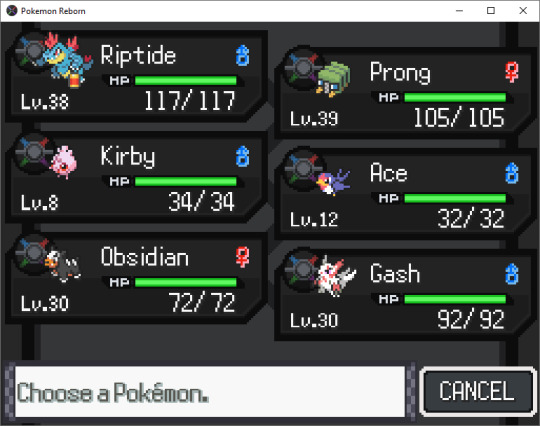
Riptide is a given, and Prong is there to use Charge Beam to switch to Factory Field. Obsidian is there as the Dark-type, and her Fire half will also be immune to any possible Will-O-Wisp shenanigans. Gash, meanwhile, will be immune to Ghost-type moves and be able to deal super effective damage with Night Slash. Kirby is there because his Fairy-type moves will be able to hit Sableye or Spiritomb, and being part Normal-type will also make him immune to Ghost moves.
Ace, though, is an interesting case. You see, in addition to also having a Ghost immunity, his Ability is noteworthy. Usually, you'd want Guts on your Taillow/Swellow, but in this specific instance, his current Ability is very useful: Scrappy. If you're unaware, Scrappy allows for Normal-type attacks to hit Ghost-types- in other words, Ace can bypass the Ghost immunity to Normal while maintaining his own immunity. Combine that and the fact that you can get the Facade TM from the Arcade, well…I think you know what I'm thinking.
So now, it's that time again- time to go on our grand training arc at the Grand Hall!
(Several battles later…)
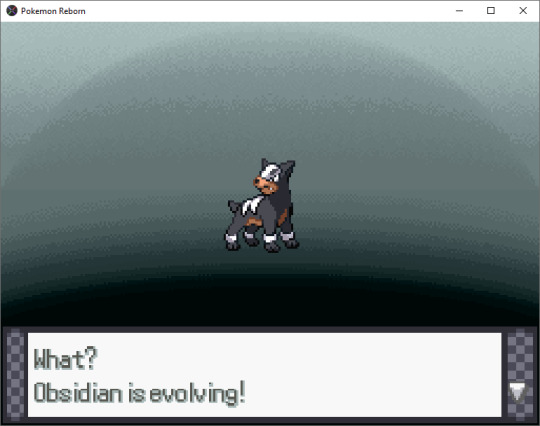

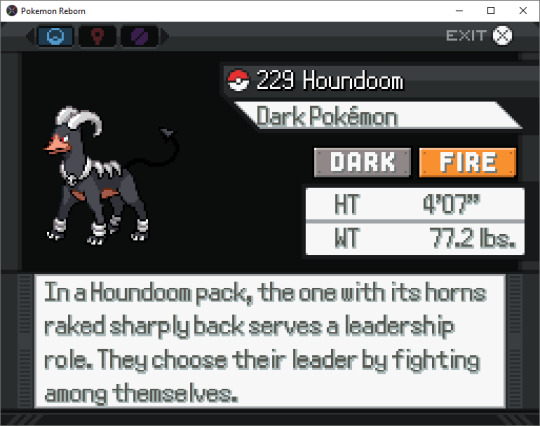
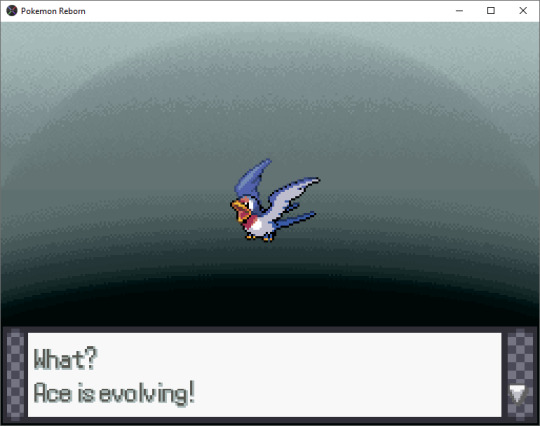


And now- well, Kirby is a friendship evolution, so that's gonna be a bit more complicated. But, I can just wander around to build up friendship- which I need to do because I'm heading down to the Underroot, both to mine the glowing rocks down there and to get Ace burned. I know you can encounter Shuppet down there, and at their level, they should know Will-O-Wisp.
(Many steps later…)

Success! And now, we continue mining-
(Several rocks later…)
So, while mining, I came across this:
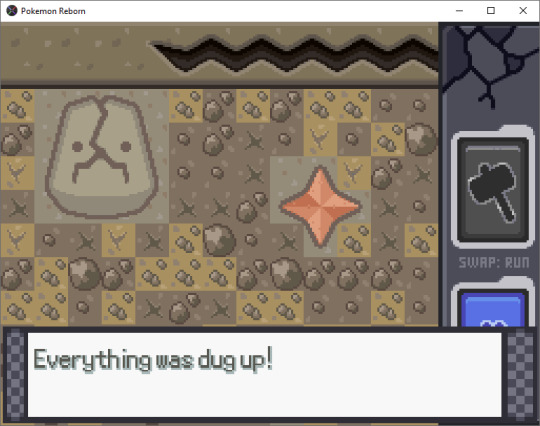
Just…casually coming across the Odd Keystone, no big deal, no malevolent spirits are gonna burst out of it anytime soon, I'm sure. Anyways, back to grinding friendship on Kirby-
(Many more steps later…)
So when I came back to Grand Hall, I talked to this guy (I thought he was the guy who sold Common Candies for...reasons), and this happened:


Which…hey, better late than never, I suppose.
Previous
Next
3 notes
·
View notes
Text
so i’ve been thinking. steelport is an industrial city, why do they have a nuke plant? going off my theory that stilwater was a mining/fracking outpost until the ‘earthquake,’ i want to say the same for steelport. both cities have industrial roots. maybe they both sit on oil or gas deposits. they were first settled to collect these resources, then, in steelport especially, steelworks popped up around the energy plants. the companies built worker accommodations, families moved in, schools had to be built, etc etc. and bam you have yourself a city. but i’m rambling. so why does steelport have an apparently abandoned nuclear plant? well i’m going to say it’s not nuclear. it’s called ‘burns hill’ for godsake. it was definitely a fossil fuel plant back in the day. why is it abandoned now? well i can’t find results for how far nuclear power can be used from the source bc google is an absolute shitshow. so i’m going to say that steelport (being close by) runs on the power from stilwater’s nuke plant. this change is a result of fears that steelport would meet stilwater’s fate and get sunk below sea level. but the change meant the burns hill plant had to close, and thousands were put out of work. and since i don’t care about canon, i want to say that ultor was an industrial corp long before they started selling sunglasses (which was possibly a move to destigmatize the brand name). the stilwater nuke plant was built decades before sr2. and the people of steelport have been harbouring distrust and outright hatred for ultor ever since. but ultor continued to spread like a disease on steelport, despite resistance. chemical plants were set up (that pollute the air and water). more and more of the original factories and plants shut down in steelport, a city dominated by these structures, and thousands put out of work. the central island has been wiped clean of the remnants but the eastern island was only remodelled. there, the bones remain, dressed up as bougie nightclubs or art studios. now only a small amount of these original factories are still in use, in the poorest parts of the city, where houses are crammed in between and the air is choked by black smoke. there are slums, the old original company housing now falling apart from rot and age and structural faults. the old burns hill reactor lights up at night, the home to an underground club, where the city’s downtrodden gather to let loose. now that ultor has firmly set its sights on the entirety of steelport as a possible holiday destination, a beacon of luxury and entertainment for the rich, they intend on expanding their ‘revitalisation’ project
11 notes
·
View notes
Text
May 12, 2024 Update from the Battleship Texas Foundation
"BATTLESHIP TEXAS UPDATE
The ship is currently moored at Pier D in Gulf Copper Shipyard where it will continue to undergo repairs and preparations to become a museum ship once again!
DECK REPAIRS: The decking on the ship's bow and superstructure deck has been removed. Steelworkers have been locating and repairing any pinholes found in the steel deck. A pressure treated pine will be put back on the deck once repairs and a proper coating has been applied. Yes, some of this wood is being saved to produce items to raise funds.
For more information on the deck click here: link

One of Gulf Coppers workers pressure washing the deck to help prepare it for blasting and painting.

Battleship Texas Foundation and Valkor working side by side to remove a coaming to make re-decking easier.

With the coaming removed, what is probably the very last of the 1913 pine deck is exposed.

A deck drain inside the armored citadel on second deck has been un-blanked and reinstalled.

The last of the wood has been removed from the superstructure deck.
SMOKE STACK REPAIR: The ship's smoke stack is being repaired so that it becomes watertight. Both the whistle piping and siren will be added when repairs conclude.

A Gulf Copper welder working on the smokestack.
TURRET WATER SHEDS: The turret water sheds are being removed from the turrets to be repaired. There is a considerable amount of corrosion between the layers of steel that needs to be addressed before the ship is repainted.

Turret Two has had all of the turret water sheds removed and are currently being worked on.
RADAR TOP MAST: The radar top mast has been removed from the ship's main mast and will receive structural repairs before being placed back on the ship.

Fire control radar base for the aft fire control tower being fabricated.
MAIN MAST: The deck on the ship's main mast is being repaired and replaced in certain areas. Gun mounts are also being added back.

Battle gaff for the main mast has been repaired and painted along with other steel to be used for repairs.
FREQUENTLY ASKED QUESTIONS:
WHAT’S NEXT? - Battleship Texas will remain at Gulf Copper Shipyard for until her new home is ready for her. Additional steel work, replacement of the ship’s deck, aft fire control restoration, and painting will be done during this time.

A non-original vent that was installed when the ship was being prepared to become a museum has been removed and the deck closed.

One of eight new floater net baskets being fabricated by Gulf Copper.
TOURING? - The Battleship Texas Foundation is working on new touring opportunities before the ship reopens.
REOPENING? - There is a lot to be done before the ship is ready for touring at its new home in Galveston, Texas. Reopening is projected to happen sometime in the later half of 2025.
MISSING GUNS? - The ship's anti-aircraft guns are currently undergoing restoration. The guns and gun directors will be replaced once their restoration is complete.

All three of the port side 5"/51 guns have had their bases reinstalled.
Come on Texas!
To donate to the preservation and operation of Battleship Texas, please visit: https://battleshiptexas.org/
Support Battleship Texas by making a purchase through the ship's store: https://store.battleshiptexas.org"
Posted on the Battleship Texas Foundation Facebook page: link
#Battleship TEXAS#Battleship Texas Foundation#Update#USS TEXAS (BB-35)#USS TEXAS#New York Class#Dreadnought#Battleship#Warship#Ship#Museum Ship#Galveston#Texas#repairs#Gulf Copper#Restoration#May 2024#my post
20 notes
·
View notes
Note
I now want to see "Bloodmoon"-esque variants of the other Ride/Noble Pokémon. (I'm very partial to the idea that Bloodmoon Ursaluna is actually Ride Ursaluna in particular-so you could do all sorts of fun things with that concept.)
[ For example: "Old Conductor Sneasler", a Sneasler who has survived the ravages of time and dwells in the depths if Mount Coronet. Her claws have developed a metallic quality-to the point that her signature move "End of Line" deals both Steel and Poison damage, and she has a variant of the Steelworker ability. Old Conductor Sneasler is said to be searching for a dear friend-commonly believed to be her dear Warden, who vanished ever so long ago. ]
Among Pokémon there is a vast difference in lifespan, generally corresponding to type and physical composition. Prime Steel types can persist until their mechanisms rust or turn brittle, which of course can be forestalled a long ways by regular maintenance; Prime Ghosts seem able to persist indefinitely, or at least, until they run out of some undefinable will and dissipate.
This is all background to add context to the statement that very few Pokémon truly live forever.
But something... happened. Or, must have happened, though nobody's entirely clear what, or when, exactly. During the second Rift Crisis, the second coming of the Almighty, when the region was once more suffused with divine power—the Pokémon that bore its blessing, the Nobles, they simply... stopped. Stopped aging, stopped dying. The ten that had been present then, persisting indefinitely. Succession over time is the norm, leaving the humans of the region at a loss for how to react.
But while their lifespans paused, they, time did not. Ursaluna wandered slowly, already ancient when it was frozen, slowly changing into something not quite like what it had been before. Basculegion has not been seen in an age, but its kind can grow indefinitely throughout their lifespan, so perhaps it has something to do with the tales of leviathans off Sinnoh's western coast. Kleavor guards and cultivates its forest, same as always, and Lilligant its vast mire-garden, beloved by the people of the region. Braviary soars ever higher, its watchful eye over the entire region from above. Electrode is said to have buried itself and put down roots, as only the most ancient of its kind ever did.
The Lady Sneasler of that age was known as something of a problem child, in her past. Raised without a Warden by a Lord with old wounds in his heart, when it came time for her to take up the mantle, she did not exactly settle easily into the role. Even in adulthood, she was known to be flighty and haughty, with ears only for those vanishingly few humans who earned her respect.
So perhaps it is surprising, then, what she became. But now she guards Mount Coronet, and the structures therein, with a religious dedication. Unfailing and watchful, the ghost-guardian of travelers and the devoted, final caretaker of the most sacred place in the region. It is the last task she was ever given from the first person to earn her respect. So she will persist for as long as there is a mountain to guard—no matter what desires of her own may remain hidden in her heart.
She learned that, after all, from the best.
#the nemesis speaks#the nemesis answers#anonymous#swift writes#idk this isnt anything maybe. whatever#anyway thinks abt sneasler and ingo thinks abt-
4 notes
·
View notes